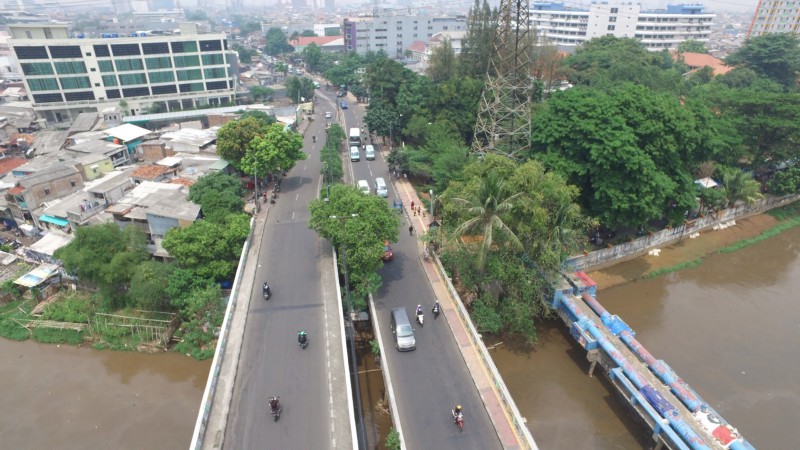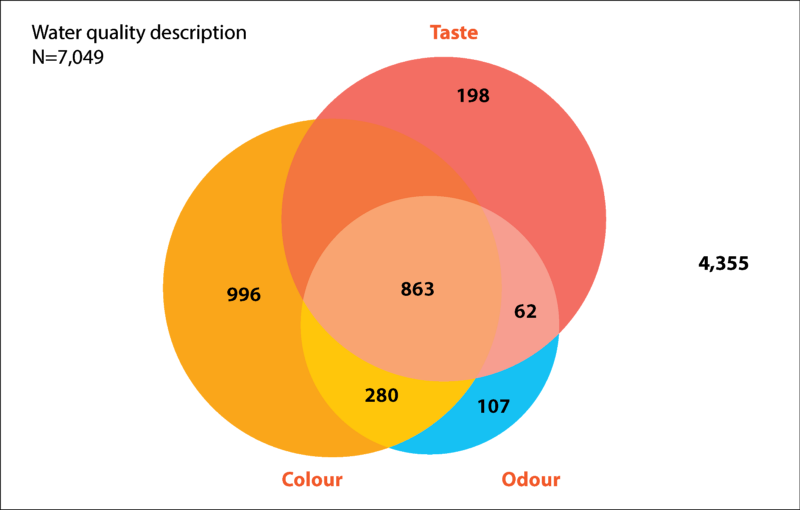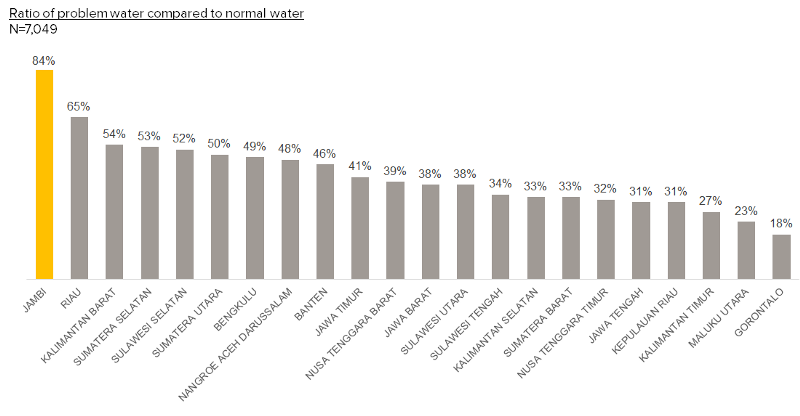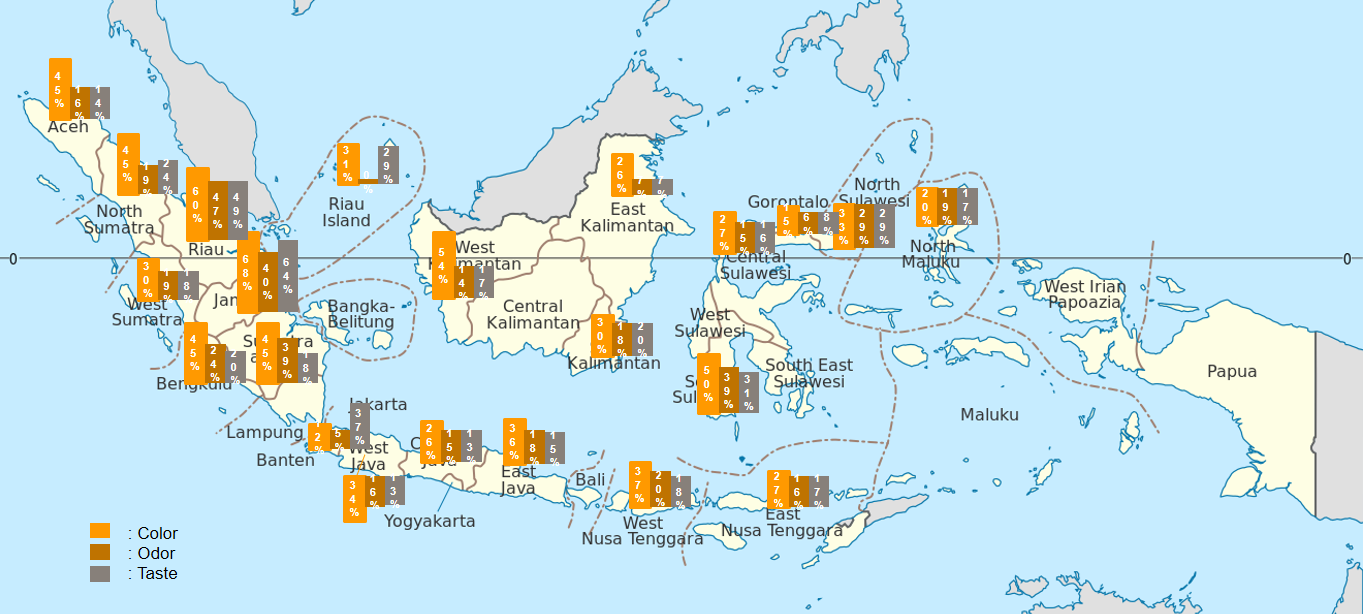
Water is fundamental for human survival, and a range of everyday activities depend on it. To sustain life, water needs to not only be available — accessibility and quality are also critical. Several factors however including improper disposal of industrial waste and household garbage contribute to water pollution and decrease citizens’ access to clean water. With the goal of exploring viable solutions that can improve citizens’ access to clean water and their holistic quality of life, Pulse Lab Jakarta and Kopernik teamed up to conduct research on this issue. This is a snapshot of some of our findings.
Boasting the largest economy in Southeast Asia, Indonesia lags behind other countries in the region in terms of access to safe drinking water, according to the fifth ASEAN State of the Environmental report. The report highlighted that while other ASEAN Member States have shown notable improvements in this area, in Indonesia and Cambodia roughly half of the population still have limited access to clean water.
When it comes to assessing the quality of water - color, odor and taste are three important properties. In communities across Indonesia, the quality of water available may be affected by different factors. For example, soil, iron and chemical contamination may be present as discolored water; odor may be caused by a high concentration of iron or chlorine or due to the presence of microscopic organisms; while an off-taste may indicate intrusion, such as saltwater.
The Indonesia Infrastructure Initiative (IndII) conducted a water and sanitation service index survey throughout 22 Indonesian provinces. With Pulse Lab Jakarta analyzing the aggregate data, from a total of 7,049 households, 2694 households (38 per cent) reported issues with the water quality, be it related to the color, odor or taste, or any of these combinations.

Water quality issues based on households
Water discoloration was observed in a total of 2,327 households (33 percent), which was significantly higher compared to households that reported experiencing water that had an odor (1,312 households — 19 percent) and a taste (1,311 households — 19 percent). These numbers translate to real-life dilemmas that affect citizens’ quality of life, ranging from hygiene-related issues (such as whether to use contaminated water for bathing and household cleaning) to health issues (such as whether the use of contaminated water is worth the risk of skin and gastrointestinal infections).
Across the 22 provinces, issues related to water quality were mostly reported on the island of Sumatra, particularly in Jambi province where 84 percent of respondents noted having experienced issues related to at least one of the three properties. Examining the top 10 provinces with the highest percentage of water problems (measured in terms of water problem to normal water ratio), we found that the majority of these provinces are located in Sumatra. This presents an opportunity to further examine whether the quality of water in these provinces are affected by any distinct geological characteristics.

Water problem to normal water ratio by province
Broken down by the specific type of water problem, Sumatra also stood out with a high occurrence of discolored water, notably with all but one province on the island scoring at least 45 per cent on this issue. With regards to issues related to odor and taste, the distributions on the island are more similar to other parts of the country (with the exception of Riau and Jambi provinces where these figures are noticeably higher). Outside of Sumatra, issues related to discolored water are also generally higher than issues related to odor and taste.

Distribution of water problems based on color, odor and taste
Citizens’ proximity to a polluted water source is a common factor, especially for households that rely on groundwater or non-piped sources. Living near a factory, landfill or polluted river for example often come with such risk. In the same way, if housing areas are located near bodies of saltwater, there’s the possibility of saltwater intrusion. A study conducted in Cilacap, Central Java showed that in many instances the water quality from wells near Kaliyasa River was well below the acceptable standard, and researchers have hypothesized that polluted river waters may have also affected the groundwater quality.
As the population in Indonesia increases, the demand for more housing facilities and improved infrastructure increases. To meet this demand, swamp lands and rice fields are sometimes cleared for the construction of new housing structures. Kopernik also conducted a survey on water quality in 2017, focusing on several housing areas and local government areas in Jakarta. There was a general assumption among the respondents that polluted water in their surroundings may be linked to nearby wells dug in areas that were previously rice fields or swamp lands, causing the water to be murky with a noxious odor.
To cope with these water problems, citizens will normally make an attempt to purify the water using a variety of approaches that vary across the socioeconomic spectrum. Citizens living in impoverished areas may opt for homemade water filtration such as using a palm fiber filtration method; while more affluent households may rely on water tanks equipped with filters to purify groundwater that has been extracted by a pump. Still, even in some communities where tap water is available, many Indonesians still have a proclivity to use groundwater or water from other non-piped sources to complement piped water supply (which is also prone to problems related to availability and quality). Whilst filters like these can remove certain impurities from the water for household use, whether or not the water is potable remains a concern.
To address the issue of clean water access, the Government of Indonesia initiated an ambitious plan to increase piped water access from 17 percent in 2015 to 60 per cent in 2019, as well as reduce dependency on non-piped water from 54 to 40 per cent in the same period. This plan included designing a strategic plan focused on improving access to piped water both in urban and rural areas; enhancing the financial, economic and human resource capacity of public water utilities; building stronger civil and enterprise partnerships; as well as coming up with innovations to ensure citizen’s continuous access to clean water supply.
Now in 2019, it’ll be interesting to see how the Government’s efforts have progressed — what worked and what didn’t. In whichever case, a consolidated effort from multiple stakeholders will be key to ensuring and sustaining citizens’ access to clean water for all in line with Sustainable Development Goal 6 — (ensure access to water and sanitation for all). With regards to industrial and commercial enterprises, sensible regulations around management of waste disposal need to be put in place to make sure proper steps are taken to treat waste materials. The Ministry of Agrarian Affairs and Spatial Planning’s efforts to minimize land conversion, such as from swamps into housing facilities, remain vital in ensuring that proper evaluations are done beforehand. And citizens as the main beneficiaries, also have a paramount role to play, whether it be from proper waste management to avoid further water pollution or communicating their needs so that interventions can be better tailored to their communities.
We’re keen to partner with other organisations that are working on ways to improve access to clean water supply across Indonesia, please get in touch with us if you’re interested!
This article is a joint publication by Pulse Lab Jakarta and Kopernik.



